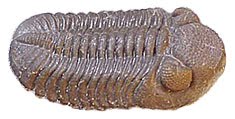Adventures on Earth column for the October 6 edition of The Review
The Manayunk Canal was a short section of what was the interstate highway system of the late 18th and early 19th centuries. Up and down the eastern seaboard, canals followed waterways that carried the commerce of the new nation.
The Manayunk Canal is a skirting canal. That is, the canal skirted Black Rock Falls.
Skirting canals were the first canals in the United States, built on the fall line where river gave way to estuary.
Below the fall line, the estuary provided a fast, economical means of transporting goods and raw materials.
Above the fall line, bateaux, rafts, and Durham boats carried goods up the river and raw materials down the river. Above the fall line navigations was subject to rapids and other obstacles.
The idea of a through canal provided an easy navigational route – smoother transportation than hauling goods on wagons over rutted, rocky, muddy roads. There was less resistance in the water than on wagon roads. Larger and heavier loads became possible on canals.
The Schuylkill Navigation was not a through canal, but a series of skirting canals linking long stretches of slackwater navigation behind dams that also provided water for the skirting canals.
The Delaware Canal was a through canal linking Easton and Bristol. Travel on the Lehigh Canal extended navigation on those rivers into the anthracite fields of Eastern Pennsylvania.
Canals, out of necessity, followed rivers upstream. Rivers provide the easiest grades, meaning less locks were required to lift of lower boats as they moved up or down the canal.
In their day, canals were a very practical solution to transportation challenges. But they also had two serious drawbacks; they were subject to freezing in winter and flooding at any time of the year.
Navigation halted for winter and after floods. Goods could not be moved during times when the canal was out of operation. For that reason, railroads came into being. Like canals, railroads followed river routes, at least in the early days. But they could operate year round and were easily rebuilt following floods.
Canals, and later railroads, were engineering marvels in their time. The underlying geology was often an obstacle that engineers had to overcome, whether digging into rock or shoring up berms or towpaths. Locks were likely the most complicated engineering challenge.
The Union Canal between Reading and Middletown on the Susquehanna faced several serious engineering challenges.
First, the summit level of the canal – the highest elevation on the canal – was near Lebanon in the Great Valley. The Great Valley is underlain by limestone, which is soluble in acidic water. The engineers had to use lumber to line the canal and keep the water from leaking out.
The summit level was also higher than any water source, so the Union Canal builders had to construct a pumping station to take water from the Swatara Creek up to the summit level.
Then a ridge northwest of the town was an obstacle that was overcome by drilling a tunnel through the rock to carry the canal and towpath under the ridge.
All of that contrasts to the Schuylkill Navigation, where dams and skirting canals posed less of an engineering challenge where much of the navigation was provided by nature.
Railroads eventually replaced canals, which lingered on in some cases into the 20th Century.
The canals that have been preserved also face challenges due to periodic flooding. But they have value by reminding us that the transportation network we now have grew from humble seeds.

No comments:
Post a Comment